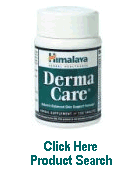|
Health Categories

Acne
Allergy
Asthma
Back Pains
Bronchitis
Cancer Treatments
Colds Supplements
Constipation
Depression
Diabetes
Diarrhea
Eczema
Emphysema
Endometriosis
Erectile Dysfunction
Fibroids
Fibromyalgia
Flatulence
Flu
Fungal Infection
Gallstone
Glaucoma
Hay Fever
Headache
Heartburn
Heart Disease
Hemorrhoids
Hepatitis
High Blood Pressure
High Cholesterol
Hyperthyrodism
Incontinence
Indigestion
Insomia
Jet Lag
Kidney Stones
Lactose Intolerance
Macular Degeneration
Menopause
Menstrual Cramps
Migrain
Muscle Soreness
Nausea and Vomiting
Osteoarthritis
Osteoporosis
Overweight
Prostate Enlargement
Psoriasis
Raynaud's Syndrome
Sinus Infection
Smoking
Stress
Stroke
Ulcers
Urinary Tract Infection
Varicose Veins
Warts
Wounds
Yeast Infection

Webmaster Resource
About Us
Contact Us
Terms & Conditions
Site Map


Acne
Asthma
Cong Heart Failure
Diabetes
Headache
High Blood Pressure
Osteoporosis
|
|
Regulatory decisions
In 2006 Australia's Therapeutic Goods Advertising Code Council (TGACC) found that a homeopathic Hangover Relief Oral Spray marketed by Brauer Natural Medicine P/L was "in breach of section 4(1)(b) of the Therapeutic Goods Advertising Code 2005 (the Code), which states that an advertisement must contain correct and balanced statements only and claims which the sponsor has already verified, and section 4(2)(c) which prohibits misleading advertisements."[129] The TGACC is established under Australian law and the Therapeutic Goods Advertising Code is generally consistent with the World Health Organisation's "Ethical Criteria For Medicinal Drug Promotion 1988"
Composition of homeopathic remedies
It is a common misconception that homeopathic remedies use only natural herbal components (akin to herbology). Herbs are used, but homeopathy also uses non-biological substances (such as salts) and components of animal origin, such as duck liver in the remedy oscillococcinum.
In herbology, measurable amounts of herbs are used, while in homeopathy the active ingredient is diluted until it is no longer detectable, or to the point that they do not contain any of the original active ingredient at all (when the dilution exceeds the Avogadro's number). Homeopathy also uses substances of human origin, called nosodes. Some people have the opposite misconception, that homeopathic remedies are based only on toxic substances like snake venom or mercury.
As the term homeopathy is well known and has good marketing value, the public can be confused by people who have adopted the term for other forms of therapy. For example, some companies combine homeopathic with non-homeopathic substances such as herbs or vitamins, and some preparations marketed as homeopathic contain no homeopathic preparations at all. Classical homeopaths argue that only remedies prepared and prescribed in accordance with the principles of Hahnemann can be called homeopathic. Many producers of homeopathic remedies also produce other types of alternative remedies under the same brand name, which can create confusion for the public.
Homeopathy and vaccination
To some, homeopathy, particularly the use of nosodes, resembles vaccination, in that vaccines contain a small dose of the "disease" against which they are to protect. Hahnemann interpreted the introduction of vaccination applied nowadays as such: But to use a human morbific matter (a Psorin taken from the itch in man) as a remedy for the same itch or for evils arisen therefrom, stay away from it! Nothing can result from this but trouble and aggravation of the disease.[130] Roberts: giving the identical instead of the similar means the difference between isopathy and homoeopathy.
According to the philosophy of homeopathy, the body could become susceptible to "morbific noxious agents". The challenge of the homeopath is to prevent disease in the first place with the first sign of symptoms, this could be imminent, long before an acute disease appears. Hahnemann classified succeeded vaccination of smallpox due to the interaction of two similar diseases (the law of similars). When an epidemic is near, one or a few remedies could be chosen to treat a population in order to prevent the epidemic. Hahnemann gave this the description of acute collective diseases. When the epidemic is there, according to Hahnemann, the homeopath observes a complete picture of the epidemic and can constitute from a small box of remedies the fitting remedy to each individual patient.
In contrast, modern scientists and doctors see the two practices as fundamentally different. A vaccine is usually a preparation made from a bacterium or virus that cannot cause disease, while still providing enough information to the immune system to afford protection. By preparing the
immune system of a healthy organism to meet a future attack by the pathogen, vaccination hopes to prevent disease, in contrast to homeopathy's hope, which is to prevent or cure it with dilutions. Another important difference between homeopathic preparations and vaccine, is that vaccine contains measurable amounts of antigen, usually proteins or carbohydrates from the disease-causing organism, whereas homeopathic remedies have been diluted to such an extent they are unlikely to contain any detectable active ingredients. The predominant view of homeopaths is that vaccination is not consistent with the principles of homeopathy, even if it is a crude application of the law of similars, they also believe that vaccination holds serious short and long-term (health) consequences and that vaccination may potentially arouse latent inherited and constitutional weaknesses. However, their main objection is that vaccination is a mass-applied technique based on the germ theory of disease, a view homeopaths reject, instead preferring to individualize each case of sickness.
|
|
 |
|
|

EditRegion7

Sponsored Links:
|